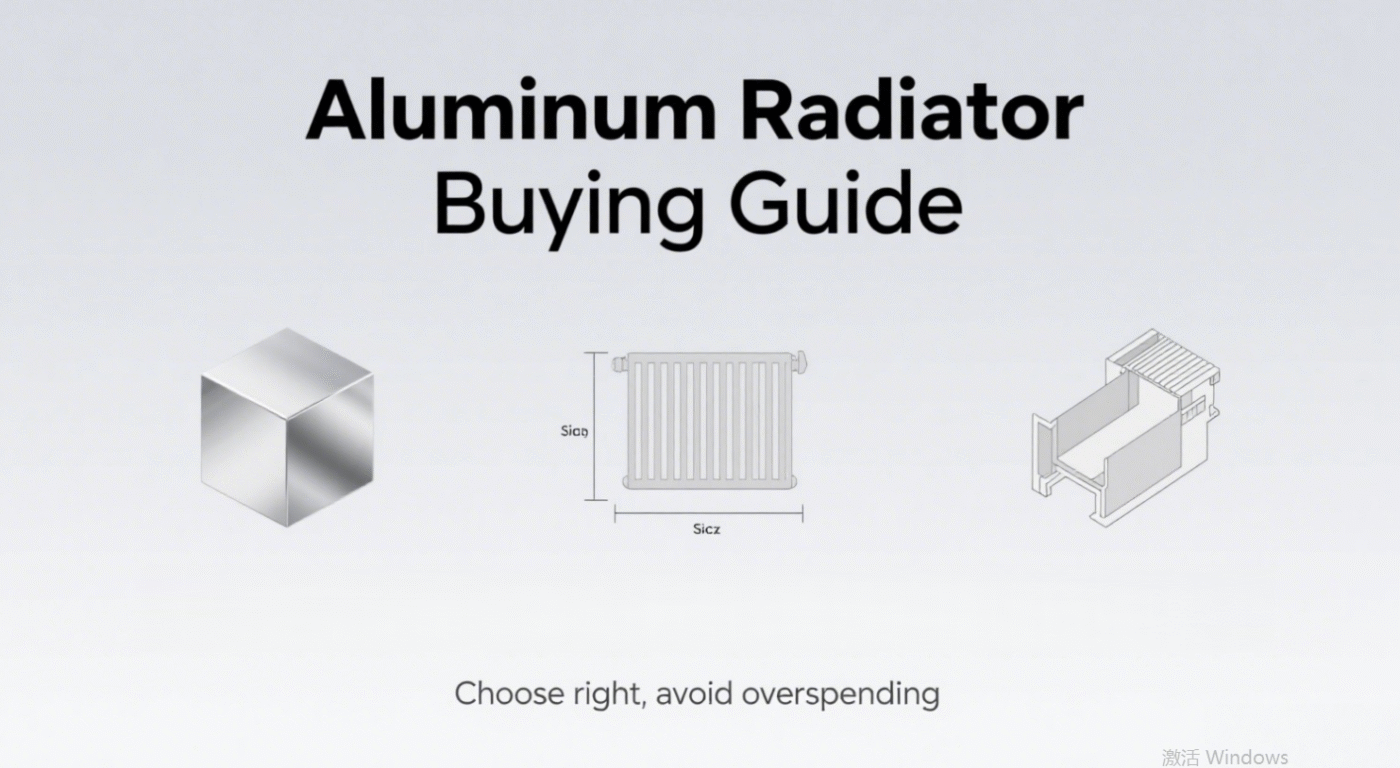When it comes to cooling solutions, aluminum radiators are a popular choice—but picking the right one isn’t just about price. This guide breaks down how to choose the best aluminum radiator by focusing on material quality, size, and structure, ensuring you get value without overspending.
1. Material Quality: Not All Aluminum Is Equal
Aluminum radiators rely on material purity and alloy composition for performance. Here’s what to check:
- Alloy Grade: Look for radiators made with high-purity aluminum alloys (e.g., 6061 or 3003). These offer better thermal conductivity and corrosion resistance than low-grade mixes.
- Coating: Opt for radiators with anti-corrosion coatings (like anodization or epoxy). This extends lifespan, especially in humid or industrial environments.
- Recycled vs. Virgin Aluminum: Virgin aluminum often has fewer impurities, but high-quality recycled aluminum (with strict processing) can perform nearly as well at a lower cost.
2. Size: Match It to Your Cooling Needs
Bigger isn’t always better. The right size depends on your equipment’s heat output:
- Measure Your Space: Check the installation area (e.g., under a car hood, inside an electronics cabinet) to avoid buying a radiator that’s too large.
- Heat Load Calculation: Estimate your device’s heat output (in watts or BTUs). A general rule: larger surface areas (more fins) work better for high-heat equipment (e.g., industrial motors).
- Thickness Matters: Thicker cores improve heat dissipation but may add weight. Balance thickness with your application’s weight limits (e.g., in automotive or portable electronics).
3. Structure: Design Dictates Efficiency
The internal and external structure of aluminum radiators directly impacts cooling performance. Key features to compare:
- Fin Design: Fins increase surface area for heat transfer. Look for:
- Density: More fins per inch (FPI) boost efficiency but may restrict airflow—ideal for forced-air systems.
- Shape: Louvered or waved fins enhance turbulence, improving heat exchange.
- Tube Configuration: Tubes carry coolant/fluid. Options include:
- Single-row vs. Multi-row: Multi-row tubes (2-3 rows) handle higher heat loads (e.g., heavy machinery).
- Tube Diameter: Wider tubes flow more fluid but take up space; narrow tubes suit compact setups (e.g., electronics).
- Header & Tank Material: Ensure headers (end caps) and tanks are durable—plastic tanks are cost-effective for light use, while aluminum tanks offer better longevity for industrial settings.
4. Avoid Common Mistakes
- Don’t Overbuy: A radiator designed for industrial use is wasteful for small electronics.
- Check Compatibility: Ensure fittings (hoses, connectors) match your system (e.g., automotive coolant lines, electronic heat sinks).
- Prioritize Brand Reputation: Trusted manufacturers test their aluminum radiators for pressure and thermal performance—avoid cheap, uncertified options that fail quickly.
Final Tip: Balance Cost & Performance
The best aluminum radiator fits your specific needs, not the highest price tag. For low-heat devices (e.g., small electronics), a basic aluminum radiator works. For heavy-duty use (e.g., vehicles, industrial machinery), invest in a higher-grade alloy with robust structure—saving you money on replacements long-term.
Choose wisely, and your aluminum radiator will deliver reliable cooling for years to come!

